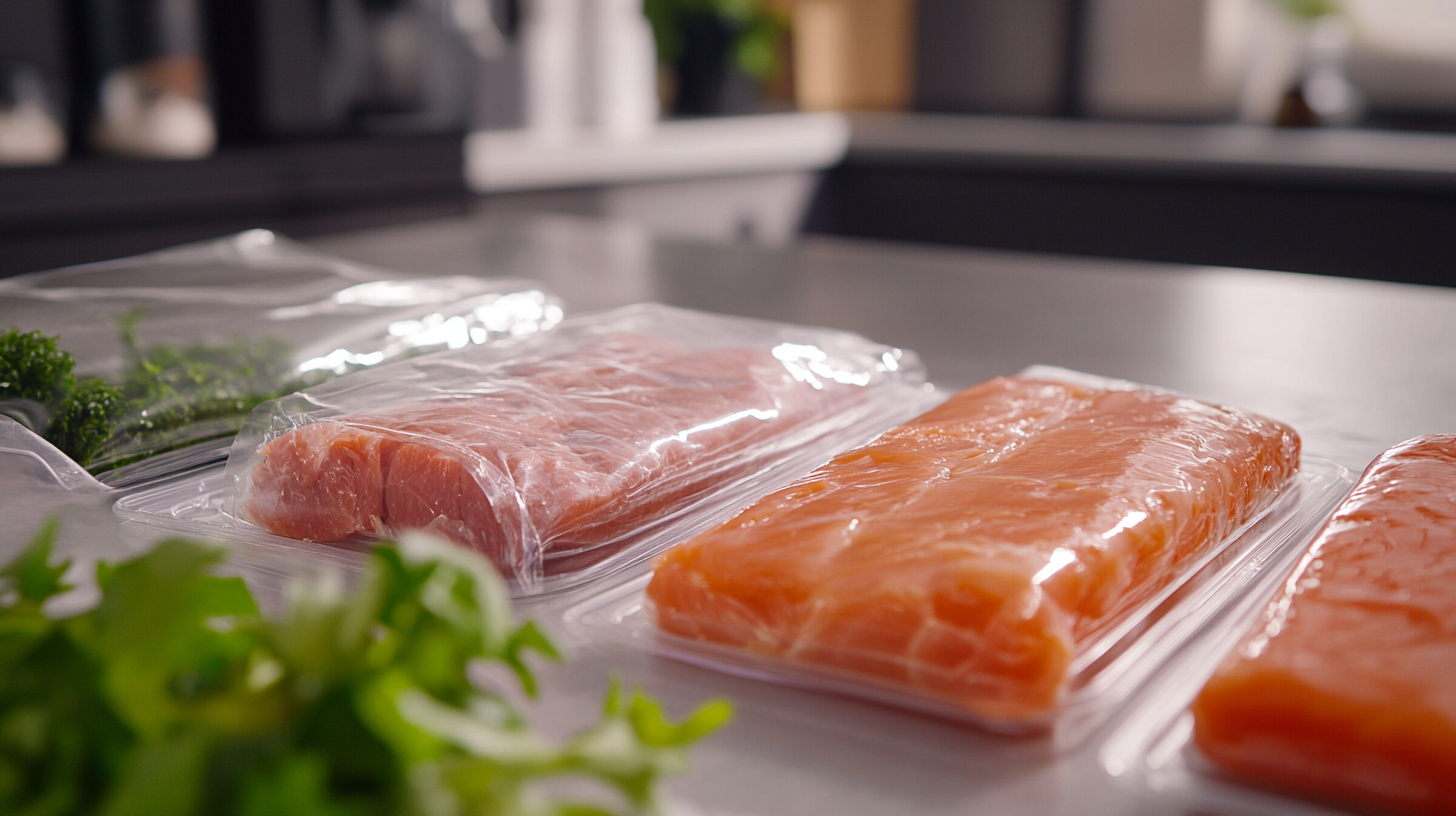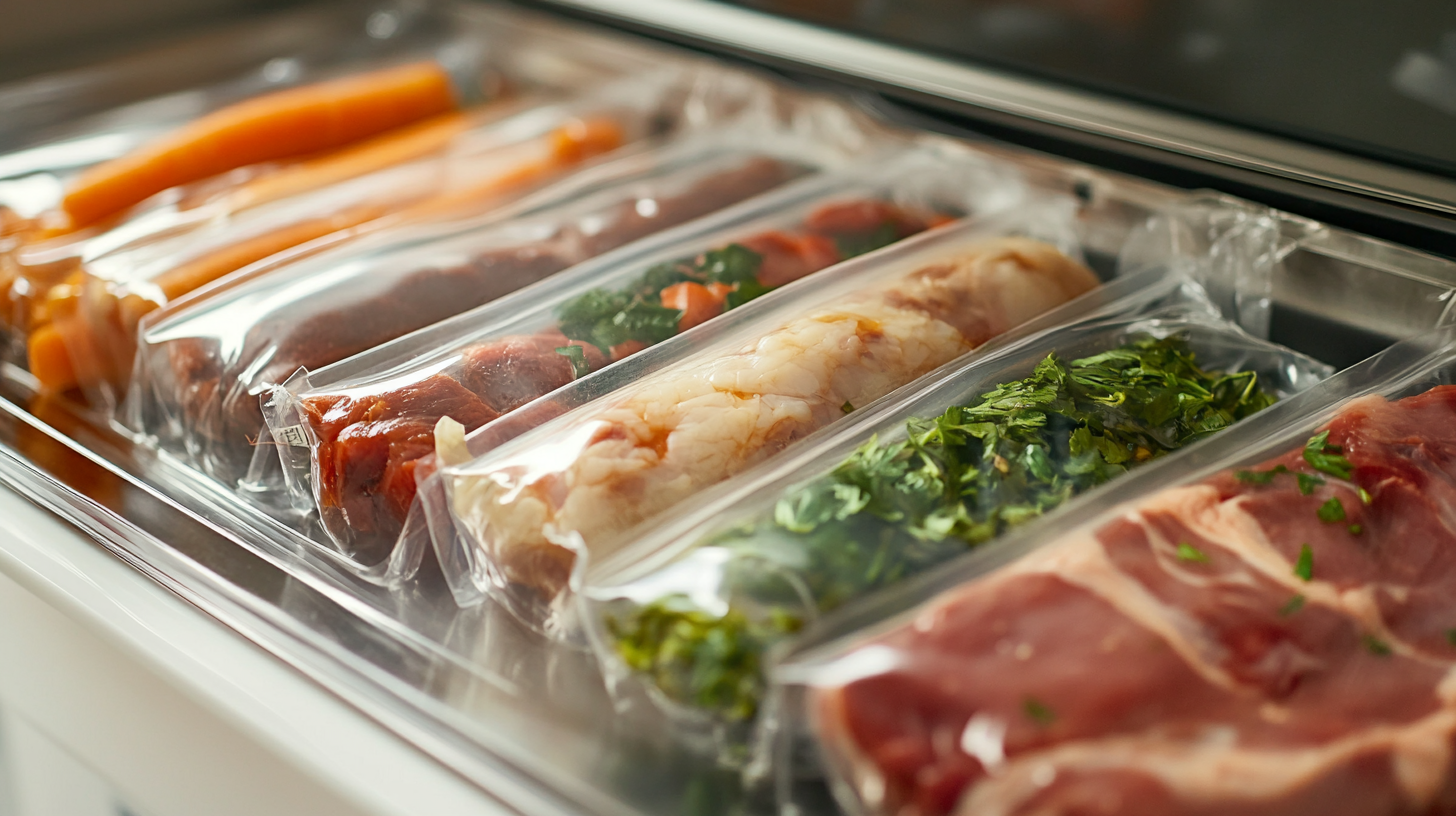In the realm of food preservation, the significance of maintaining freshness cannot be overstated. According to a report by the Food and Drug Administration (FDA), an astounding 30-40% of the food supply in the United States is wasted each year, amounting to approximately 133 billion pounds. A pivotal factor contributing to this waste is inadequate storage methods, where air exposure hastens spoilage and diminishes flavor. This is where Universal Vacuum Sealer Bags come into play, offering a robust solution for extending the shelf life of perishable items and reducing food waste.
As consumers become increasingly aware of sustainability and food safety, the demand for effective preservation techniques has surged. Research from the National Institute of Health (NIH) indicates that vacuum sealing can extend the refrigerator shelf life of meats by 1-2 years compared to traditional storage methods. By harnessing the potential of Universal Vacuum Sealer Bags, not only can households minimize food waste, but they can also save money and enjoy fresher ingredients at their fingertips. This blog will delve into the techniques and best practices for maximizing the freshness of food using these essential storage tools.

Vacuum sealer bags have emerged as a revolutionary solution for food storage, particularly in preserving the freshness of seafood products. By applying advanced packaging technologies, these universal vacuum sealer bags not only minimize spoilage but also extend the shelf life of perishable items. According to a systematic review published recently, innovative interventions in packaging methodologies can effectively reduce waste, with some studies showing a reduction in spoilage rates by up to 30% compared to traditional storage methods.
One of the primary benefits of using universal vacuum sealer bags is their ability to create an airtight environment, which significantly slows down the oxidation process. The food industry has reported that vacuum sealing can extend the freshness of fish and shellfish up to three times longer than conventional methods. For instance, a report from the National Fisheries Institute highlights that seafood, when vacuum sealed, retains its quality for up to 14 days in the refrigerator, whereas non-sealed seafood typically lasts only 3 to 5 days.
Moreover, these bags are adaptable for various food items beyond seafood, making them a versatile choice for any kitchen. By engaging in proper vacuum sealing techniques, families can enjoy not only the benefits of reduced food waste but also the convenience of meal prep. Utilizing universal vacuum sealer bags for food storage not only ensures that meals taste fresh but also supports sustainable practices in households, aligning with growing concerns about food preservation and environmental impact.
| Feature | Description | Benefits |
|---|---|---|
| Compatibility | Works with most vacuum sealers | Versatile for different household sealers |
| Durability | Heavy-duty material | Prevents punctures and tears |
| Freshness | Air-tight seal | Extends shelf life of food |
| Storage | Space-efficient design | Maximizes freezer space |
| Reusability | Can be washed and reused | Cost-effective and eco-friendly |
| Safety | BPA-free material | Safe for food storage |
When it comes to preserving food for longer periods, choosing the right vacuum sealer bag can make all the difference. With a variety of options available on the market, it's essential to understand what distinguishes one type of bag from another. Universal vacuum sealer bags come in various sizes and materials, which cater to different storage needs. The choice you make directly affects the longevity of your food, so knowing the advantages of each type is crucial.
For instance, heavy-duty vacuum sealer bags are designed for long-term storage. They are thicker and more durable, making them perfect for items like meats and bulkier vegetables that require extra protection. On the other hand, lightweight bags are ideal for short-term storage of items such as snacks or dry goods. They can seal quickly and easily, providing a reliable barrier against moisture and air but may not withstand extended freezer conditions as well as their heavy-duty counterparts.
Additionally, consider whether you need heat-seal or zip-top vacuum bags. Heat-seal options offer an airtight seal, making them great for long-term freezer use, while zip-top bags provide convenience and flexibility for repurposing. Ultimately, understanding your storage needs will help you make informed choices, ensuring that the freshness of your food is maximized while minimizing waste.
Vacuum sealing is an effective method to maximize food freshness, and following a step-by-step approach can make it even easier. To start, gather your materials: a universal vacuum sealer, appropriate vacuum seal bags, and your food items. Ensure the bags are clean and dry, as moisture can compromise the sealing process. Lay out the food in the bag, leaving adequate space at the top for sealing. Avoid overfilling; this will help ensure a tight seal and prevent air from escaping.
Once the food is neatly packed, it’s time to seal. Place the open end of the bag into the vacuum sealer, making sure it's positioned correctly according to the manufacturer’s instructions. Engage the vacuum function, allowing the machine to remove air and seal the bag. It’s essential to monitor the process, as some items may require different sealing times to ensure a secure, airtight bag. After sealing, always check the bag for any leaks or gaps, as these can lead to freezer burn or spoilage.
Finally, label the vacuum-sealed bags with the contents and date. This will help in organizing your food storage and ensure you use items before they expire. With these simple steps, you can confidently maximize the freshness of your food using universal vacuum sealer bags, preserving both taste and nutrition for future meals.

When it comes to maintaining the freshness of your produce, using a universal vacuum sealer bag can be a game changer. These bags create an airtight seal that prevents moisture and air from reaching your fruits and vegetables, significantly extending their shelf life. For optimal results, it's essential to properly prep your produce before sealing. Wash and dry them thoroughly to remove any lingering moisture that could lead to spoilage. Additionally, consider blanching certain vegetables before sealing them, as this process can help preserve their color, texture, and nutrients over time.
Incorporating the right storage solutions can further enhance the freshness of your food. For instance, specialized produce keepers available on platforms like Amazon are designed to regulate humidity and airflow, making them excellent companions for your vacuum-sealed items. These containers can help items like lettuce and avocados remain crisp and vibrant longer, ensuring you always have fresh ingredients at hand. By combining vacuum sealing with strategic food storage, you can create a science-backed approach to keeping your kitchen supplies fresh and tasty.
Maintaining cleanliness and organization in your fridge can also contribute to freshness. Implementing spring cleaning principles and regularly inspecting your pantry and refrigerator can prevent stale odors and uninviting environments for your food. Experts recommend tackling this by using odor-eliminating strategies alongside proper food organization. By investing time into understanding how to best care for your food, you not only improve the longevity of your produce but also elevate the overall health and freshness of your home environment.
This chart illustrates the impact of different storage methods on the freshness of food over time using universal vacuum sealer bags. The data shows the percentage of freshness retained over a 30-day period across various storage methods.
When using universal vacuum sealer bags, several common mistakes can undermine your efforts to maintain freshness. One of the most prevalent errors is overfilling the bags. It might be tempting to pack as much food as possible into a single bag, but doing so can prevent the sealer from creating a proper vacuum. Leave enough space at the top—typically around three inches—to ensure a secure seal. A compromised seal can lead to air leaks and spoilage, negating the benefits of vacuum sealing.
Another mistake to avoid is neglecting to pre-freeze certain foods before sealing. Moist foods, particularly fruits and vegetables, can create excessive moisture during the sealing process. This moisture can interfere with the seal, resulting in freezer burn or stale, oxidized food. Pre-freezing items like berries or sliced meats for a short period can help reduce moisture and enhance the sealing process. Always ensure that the food is slightly frozen to give the vacuum sealer the best chance at creating an airtight seal.
Lastly, many users fail to clean their vacuum sealer regularly. Food particles and residue can accumulate over time, potentially leading to malfunction or an ineffective seal. Regularly inspecting and cleaning the sealer, especially the sealing strip, can prevent these issues. A simple maintenance routine goes a long way in ensuring optimal performance, keeping your food fresh longer. By avoiding these common pitfalls, you can fully harness the power of universal vacuum sealer bags and enjoy extended freshness for your stored foods.

